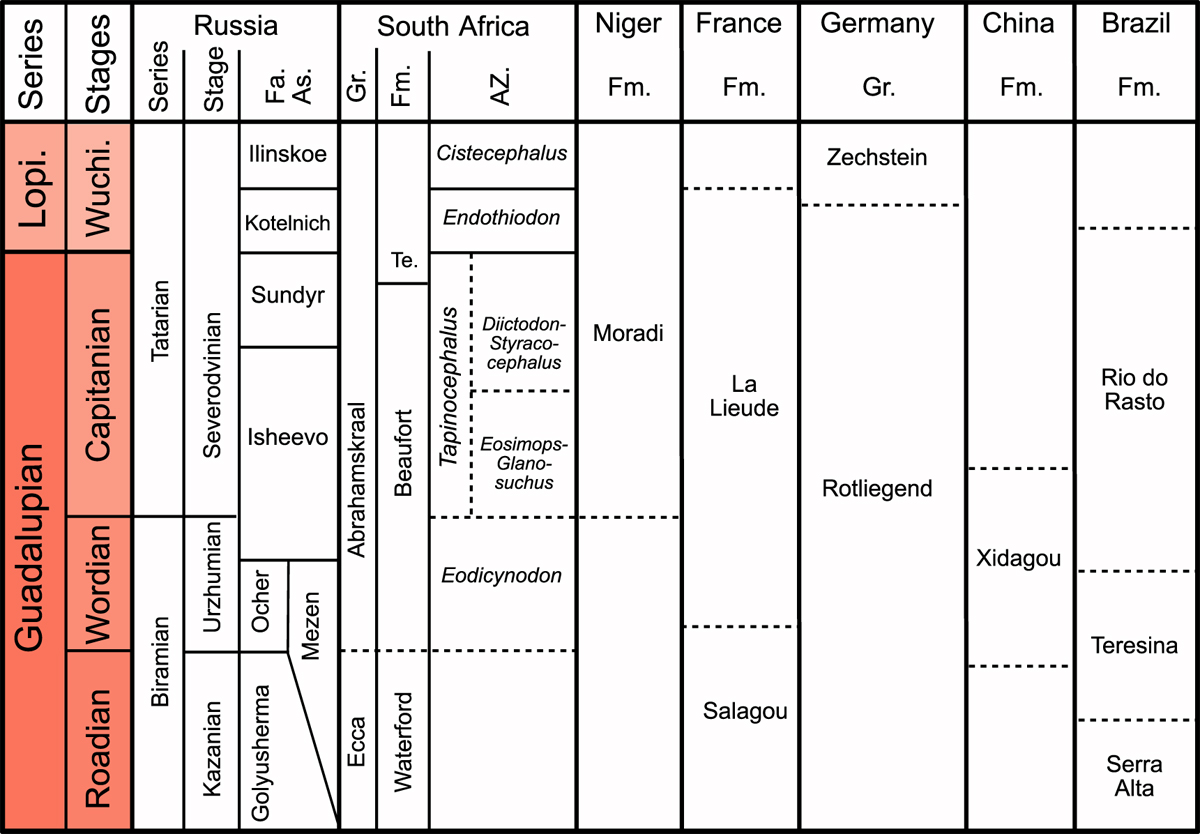Fig. 6

Download original image
Schematic stratigraphic chart of Guadalupian strata outside North America discussed in this paper. A few early Lopingian units discussed in the text are also shown. Only about the lower two-thirds of the Wuchiapingian is shown. Russian stratigraphy follows Golubev (2015) and Sennikov and Golubev (2017) for faunal assemblages and Davydov et al. (2018) for the correlations between the Russian regional scale and the international time scale. For South African, the age of the Eodicynodon Assemblage Zone follows Rubidge and Day (2020) and Day et al. (2022). The Tapinocephalus Assemblage Zone has now been divided into the Eosimops-Glanosuchus and the Diictodon-Styracocephalus subzones (Day and Rubidge, 2020). No faunal zones are currently recognized in the Waterford Formation, just under the Eodicynodon Assemblage Zone (Smith et al. 2020). The age of the Abrahamskraal-Teekloof contact follows Day et al. (2015). Brazilian geochronology follows Canile et al. (2016) and references cited therein. The age of the Moradi Formation is poorly constrained (only to Capitanian or Lopingian). The base of the Zechstein Group may date from mid- to late Wuchiapingian, and this group extends to just below the Permo-Triassic boundary (Szurlies, 2013, 2020). Abbreviations: AZ.: Assemblage Zones and subzones; Fa. As.: faunal assemblages; Fm.: formation; Gr.: group; Lopi.: Lopingian; Te.: Teckloof; Wuchi.: Wuchiapingian.
Current usage metrics show cumulative count of Article Views (full-text article views including HTML views, PDF and ePub downloads, according to the available data) and Abstracts Views on Vision4Press platform.
Data correspond to usage on the plateform after 2015. The current usage metrics is available 48-96 hours after online publication and is updated daily on week days.
Initial download of the metrics may take a while.




